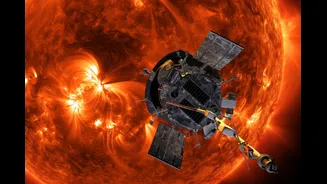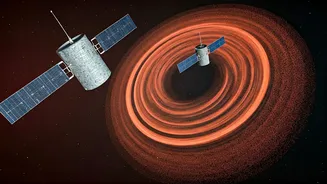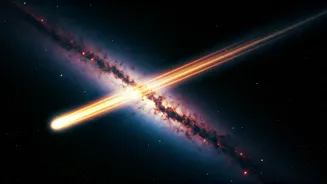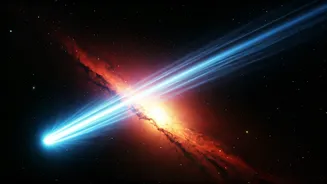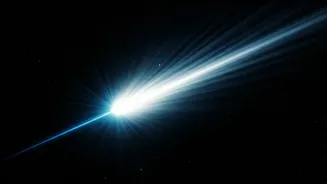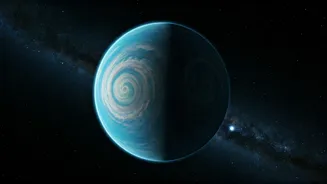Gravitational Dance Of Death
The death throes of stars present a dramatic spectacle in the vastness of space, characterized by a gravitational dance where planets meet their inevitable
end. As a star exhausts its nuclear fuel and begins to transform into a red giant, it expands dramatically. This expansion leads to a shift in the delicate balance of the planetary system. Planets that once enjoyed stable orbits find themselves drawn closer to their dying star due to powerful gravitational forces. Eventually, the star's outer layers engulf these planets. This engulfment is not a quick process, but a gradual spiraling inward, where the planets' material gets ripped apart, forming a luminous accretion disk around the star. This violent interaction provides crucial insights into the final stages of stellar evolution and the fate of planetary systems.
Measuring Planetary Demise
Scientists utilize cutting-edge techniques to observe and measure the final moments of planets consumed by stars. These methods provide critical data for understanding the process of planetary destruction and its implications. A key method involves the analysis of the light emitted by stars. As a planet nears its doom, its interaction with the star's atmosphere can cause detectable changes in the star's light, such as a brief increase in brightness. Instruments like NASA's TESS are vital in detecting these transient events. TESS monitors thousands of stars, constantly looking for dips or spikes in their brightness, which may signal a planet's disintegration. Another technique involves spectral analysis, which breaks down starlight into its component colors, revealing the chemical composition of the star's atmosphere. The presence of unusual elements, especially those associated with rocky planets, can indicate the recent consumption of planetary material.
Solar System's Uncertain Future
The findings on planet-eating stars have significant implications for the future of our own solar system. The fate of Earth is tied to the evolution of the Sun. Over billions of years, the Sun will exhaust its fuel, expanding into a red giant. During this phase, it will likely engulf Mercury and Venus. The Earth's fate is less certain; it might be spared. But if Earth escapes, it will be dramatically altered. The expansion of the Sun will dramatically alter the orbits of outer planets like Mars, Jupiter, Saturn, Uranus, and Neptune, causing a chain reaction of gravitational disruptions. Studying planet-eating stars helps scientists understand the mechanics of planetary destruction, which is important for understanding our solar system's eventual fate. The information can also assist in planning for long-term survival, as knowledge of planetary systems' life cycles can enable appropriate planning.
Dying Stars, Devoured Worlds
The observations of dying stars and the planets they consume offer poignant insights into the universe's dynamic processes. As stars age, their internal structures change, and they go through radical transformations, leading to a dramatic end for the planets in their system. The material from devoured planets enriches the star's atmosphere, leading to discernible spectral variations. Analyzing these variations offers detailed information about the composition of the destroyed planets. Such observations enable astronomers to estimate the frequency of planet consumption and to gain insight into the role these events play in stellar evolution. Studying these events helps improve the understanding of the life cycles of stars and the diversity of planetary systems, providing crucial evidence for the models of cosmic evolution.
TESS's Planetary Hunt
NASA's Transiting Exoplanet Survey Satellite (TESS) is a key instrument in the search for planet-eating stars and other celestial phenomena. TESS's mission is to monitor thousands of stars across the sky, searching for slight dips in their brightness, which may signify planets crossing in front of their stars. The data collected by TESS is incredibly valuable in identifying events where stars devour planets. The satellite's sensitivity and broad coverage enable it to observe a large number of stars, increasing the likelihood of capturing such events. TESS's findings are further analyzed alongside observations from ground-based telescopes and other space-based instruments, creating a deeper insight into the universe's dynamic nature. Its role is important in advancing astronomical research, broadening the scope of planetary science, and providing important knowledge on the evolution of stellar systems.


